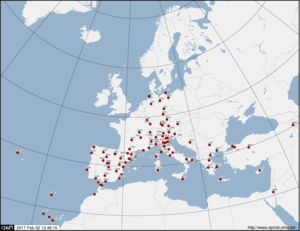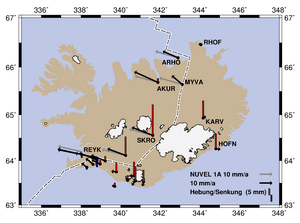Geodetic research
Reference systems

An essential geodetic element of the working group is its contribution to the realisation of the European Reference System EUREF, the EUREF Permanent GNSS Network EPN
These tasks have been carried out at the Academy in international cooperation since 1996. To this end, observational data from permanently installed GNSS reference stations in the Mediterranean, Southern Europe and the Alps are analysed as a sub-network in order to determine high-precision coordinates. Since other sub-networks are processed by other research institutions, the coordinates of a large-scale European reference system are obtained by combining all sub-networks.
In addition to the purely geometric reference systems derived from GNSS procedures, modern geodetic reference systems also contain physical components that are linked to the gravity field of the Earth. These are the magnitude of the gravity itself, as well as the physical heights commonly described as heights above sea level. The work of the former Bayerische Erdmessungskommission (Bavarian Committee for International Geodesy) has contributed to the realisation of both components in Europe. Today, global or national gravity reference systems are implemented by measuring the absolute amount of gravity at individual reference points. The freefall gravimeters used for this purpose can additionally be used to set up calibration routes for spring gravimeters. The working group uses such reference routes and supports their set-up or maintenance as part of its gravimetric work. The realisation of height reference systems is at a turning point - away from the classical levelling networks of land surveying and towards a pointwise elevation determination by means of GNSS. The linkage of GNSS heights and heights above sea level requires exact modelling of a horizontal reference surface in the gravity field of the Earth, the geoid. In various papers on gravity field modelling, the working group provides information on precise geoid calculation and thus contributes to the realisation of modern height reference systems.
Another research topic is the observation of geodynamic processes, for example in Iceland using satellite geodesy.
Similar to the EUREF project, observational data from permanently installed GNSS reference stations are analysed. Iceland is characterised by its location on a divergent plate boundary, the Mid-Atlantic Ridge, with a great number of active volcanoes, earthquakes and glaciers. By determining high-precision coordinates, these individual processes can be detected and subsequently interpreted. This work thus makes an important contribution to geoscientific research.

